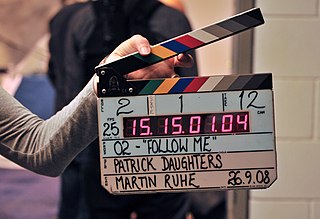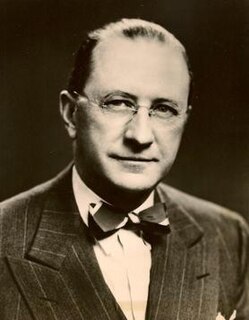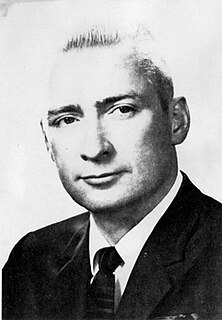Related Research Articles
The Society of Motion Picture and Television Engineers (SMPTE), founded in 1916 as the Society of Motion Picture Engineers or SMPE, is a global professional association of engineers, technologists, and executives working in the media and entertainment industry. As an internationally recognized standards organization, SMPTE has published more than 800 technical standards and related documents for broadcast, filmmaking, digital cinema, audio recording, information technology (IT), and medical imaging.

SMPTE timecode is a set of cooperating standards to label individual frames of video or film with a timecode. The system is defined by the Society of Motion Picture and Television Engineers in the SMPTE 12M specification. SMPTE revised the standard in 2008, turning it into a two-part document: SMPTE 12M-1 and SMPTE 12M-2, including new explanations and clarifications.

Chroma subsampling is the practice of encoding images by implementing less resolution for chroma information than for luma information, taking advantage of the human visual system's lower acuity for color differences than for luminance.

A test card, also known as a test pattern or start-up/closedown test, is a television test signal, typically broadcast at times when the transmitter is active but no program is being broadcast.
Digital Picture Exchange (DPX) is a common file format for digital intermediate and visual effects work and is a SMPTE standard. The file format is most commonly used to represent the density of each colour channel of a scanned negative film in an uncompressed "logarithmic" image where the gamma of the original camera negative is preserved as taken by a film scanner. For this reason, DPX is the worldwide-chosen format for still frames storage in most digital intermediate post-production facilities and film labs. Other common video formats are supported as well, from video to purely digital ones, making DPX a file format suitable for almost any raster digital imaging applications. DPX provides, in fact, a great deal of flexibility in storing colour information, colour spaces and colour planes for exchange between production facilities. Multiple forms of packing and alignment are possible. The DPX specification allows for a wide variety of metadata to further clarify information stored within each file.

SMPTE color bars are a television test pattern used where the NTSC video standard is utilized, including countries in North America. The Society of Motion Picture and Television Engineers (SMPTE) refers to the pattern as Engineering Guideline (EG) 1-1990. Its components are a known standard, and created by test pattern generators. Comparing it as received to the known standard gives video engineers an indication of how an NTSC video signal has been altered by recording or transmission and what adjustments must be made to bring it back to specification. It is also used for setting a television monitor or receiver to reproduce NTSC chrominance and luminance information correctly.

YPbPr or Y'PbPr, also written as YPBPR, is a color space used in video electronics, in particular in reference to component video cables. YPbPr is gamma corrected YCbCr color space ; the two are numerically equivalent but YPbPr is designed for use in analog systems while YCbCr is intended for digital video. The EOTF may be different from common sRGB EOTF and BT.1886 EOTF. Sync is carried on the Y channel and is a bi-level sync signal, however, in HD formats a tri-level sync is used and is typically carried on all channels.
1080i is a combination of frame resolution and scan type. 1080i is used in high-definition television (HDTV) and high-definition video. The number "1080" refers to the number of horizontal lines on the screen. The "i" is an abbreviation for "interlaced"; this indicates that only the odd lines, then the even lines of each frame are drawn alternately, so that only half the number of actual image frames are used to produce video. A related display resolution is 1080p, which also has 1080 lines of resolution; the "p" refers to progressive scan, which indicates that the lines of resolution for each frame are "drawn" on the screen in sequence.
576p is the shorthand name for a video display resolution. The p stands for progressive scan, i.e. non-interlaced, the 576 for a vertical resolution of 576 pixels. Usually it corresponds to a digital video mode with a 4:3 anamorphic resolution of 720x576 and a frame rate of 25 frames per second (576p25), and thus using the same bandwidth and carrying the same amount of pixel data as 576i, but other resolutions and frame rates are possible.
Charles Paulson Ginsburg was an American engineer and the leader of a research team at Ampex which developed one of the first practical videotape recorders.
Arthur V. Loughren was an American electrical engineer who played a prominent role in the development of NTSC television.

Bernard J. Lechner was an electronics engineer and formerly vice president, RCA Laboratories, where he worked for 30 years covering various aspects of television and information display technologies.
High-definition television describes a television system providing a substantially higher image resolution than the previous generation of technologies. The term has been used since 1936, in more recent times it refers to the generation following standard-definition television (SDTV), often abbreviated to HDTV or HD-TV. It is the current de facto standard video format used in most broadcasts: terrestrial broadcast television, cable television, satellite television and Blu-ray Discs.
William F. Schreiber (1925–2009) was an American electrical engineer and professor emeritus at the Massachusetts Institute of Technology (MIT). Schreiber had served on the advisory committee of the Federal Communications Commission. In March 1969, he founded the imaging systems supplier ECRM, which designed a computer-based color printing system and an optical character recognition machine.
Adrian Ettlinger was an American electrical engineer and software developer and a pioneer in television and video technology. He has been described as a "visionary" and the "legendary" "engineering father" of non-linear video editing, and has been recognized for his contributions to a range of technologies important to the advancement of television and video as well as several other accomplishments.

P3 is an RGB color space. DCI-P3 is used with digital theatrical motion picture distribution. Display P3 is a variant developed by Apple Inc. for wide-gamut displays.
High-dynamic-range television is a technology that improves the quality of display signals. It is contrasted with the retroactively-named standard dynamic range (SDR). HDR changes the way the luminance and colors of videos and images are represented in the signal, and allows brighter and more detailed highlight representation, darker and more-detailed shadows, and a wider array of more intense colors.

Frederic Waller was an American inventor and film pioneer.

Charles Hubert Coleman Jr. was an American electronic engineer and a pioneer in the field of color video tape recording and later in high data-rate digital tape recording. He was also an amateur explorer and avid pilot.

The EBU colour bars is a television test card used to check if a video signal has been altered by recording or transmission, and what adjustments must be made to bring it back to specification. It is also used for setting a television monitor or receiver to reproduce chrominance and luminance information correctly. The EBU bars are most commonly shown arranged side-by-side in a vertical manner, though some broadcasters – such as TVP in Poland, and Gabon Télévision in Gabon – were known to have aired a horizontal version of the EBU bars.
References
- ↑ "Charles Poynton - Freelance". Poynton.com. 2011-02-08. Retrieved 2014-02-10.
- ↑ "Portrait Displays - Home". Portrait Displays.
- ↑ Team, SMPTE Marketing. "David Sarnoff Medal Recipients | Society of Motion Picture & Television Engineers". www.smpte.org.
- ↑ http://www.filmcontact.com/south-africa/events/charles-poynton-seminar-digital-film . Retrieved 2010-07-12.
{{cite web}}: Missing or empty|title=(help) - ↑ "Charles Poynton - Biography". Poynton.com. 2005-04-28. Retrieved 2014-02-10.